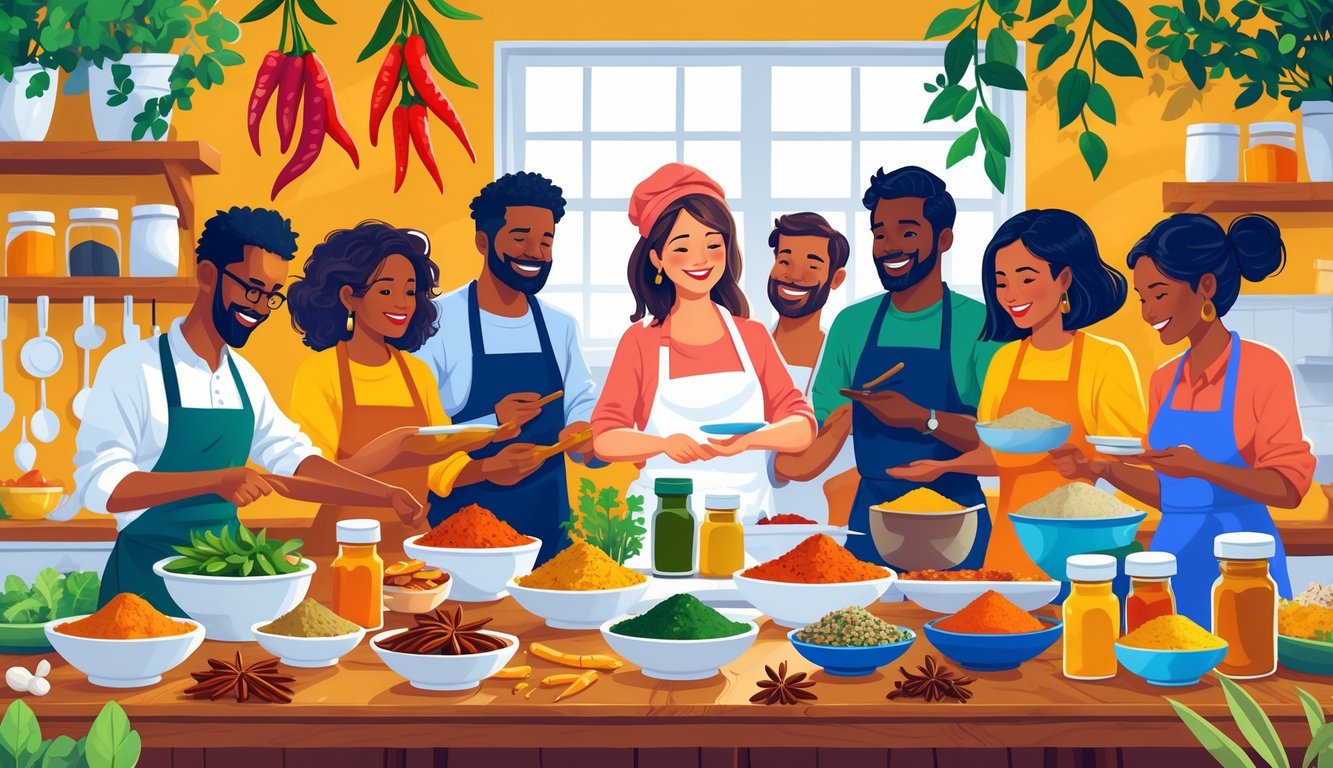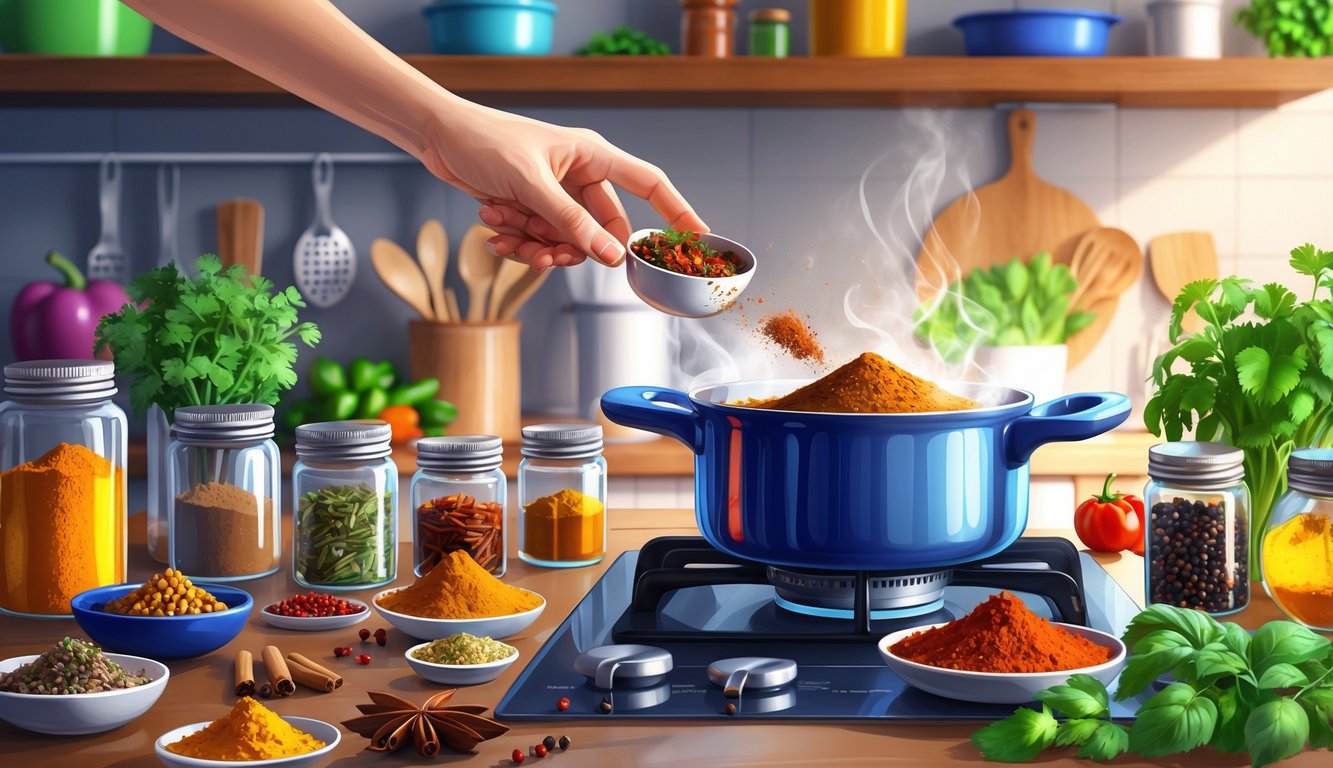
Look, I don’t know if it’s the pandemic, a collective midlife crisis, or just TikTok boredom, but suddenly everyone’s obsessed with harissa, Sichuan peppercorns (which, by the way, are never where you think they’ll be), sumac, and shichimi togarashi. Are we all trying out for MasterChef? No clue. Apparently, global spice sales are “booming”—BBC says the market’s about to hit $126 billion this year, which is hilarious when you realize how tiny those jars are. (I mean, saffron’s like $20 for a pinch—shouldn’t we get a discount for buying air?) My inbox? Full of randoms demanding ras el hanout substitutes or asking where to find Aleppo pepper. Sometimes I feel like I’m running a spice hotline for confused home cooks.
Garam masala’s selling out everywhere. My neighbor—she’s 75—texted for gochugaru recommendations. I guess we’re all just one Korean stew away from enlightenment. Majestic Spice’s 2025 forecast? North America’s spice market is growing 4.8% every year, which sounds fake but whatever. People are just sick of boring chicken, right? Last week, I spotted za’atar in the “local” section at my grocery store, right between maple syrup and salsa. So, either the planet’s geography is melting or marketers have lost their minds.
Every chef and their dog on Instagram is yelling about “freshness” and “sourcing.” I swear, someone said ground coriander loses half its flavor in six months—like, who’s tracking that? Nobody I know. Instead of arguing about salt, everyone’s buying custom blends and sauce kits, or dropping $8 on Turkish pul biber, and half of them can’t even dice an onion. But hey, apparently it’s about “biodiversity” now. Sure.
Why Global Spices Are Surging in Popularity
I blinked and suddenly group chats are full of sumac and Sichuan peppercorn debates. My grocery store swapped half the salt aisle for “Moroccan blend” and turmeric. Three years ago? Nobody cared. Now, spices are basically the new status symbol for people who used to buy pre-made pasta sauce.
Adventurous Eaters and Changing Tastes
Everyone’s hacking together gochugaru noodles or making garam masala shakshuka. My neighbor can’t even pronounce “chermoula,” but she’s making it for brunch. It’s not just food nerds, either—a BBC article last year said spice sales are up because people got bored at home during lockdown (https://www.bbc.com/news/business-65026330). Chefs are out here saying fenugreek’s outselling black pepper. I’m not sure I believe them, but it’s a fun headline.
Industry people keep talking about Asia-Pacific and the Middle East driving demand for “premium” seasonings. I can’t find cheap saffron anymore. Dried mint? Gone. Supposedly, global spices are the new normal for middle-class pantries (trade trend link: https://sunimpex.biz/spicing-up-the-market-trends-in-global-spice-consumption-product-innovation/). If you’ve ever suffered through bland food, you get why everyone’s suddenly on a flavor quest. Or maybe we’re all just bored. Hard to say.
Social Media’s Influence on Spice Trends
Instagram is basically a parade of $10,000 kitchens and “viral” chili crisp hacks. Spice blends went from “niche” to “everyone has them.” Even TV food critics are talking about TikTok recipes now (Vanns Spices has a whole thing on it: https://vannsspices.com/journal/spice-trends-of-2024/).
Why does ajwain trend? Who’s making urfa biber anything? Nobody can follow a five-step hack in fifteen seconds, but sales still spike every time a “dupe” goes viral. Market reports keep showing jumps after trending hashtags. A restaurant consultant told me menu meetings now include TikTok screenshots of Thai street food, and sometimes nobody’s even tasted the dish. But hey, limited edition menu, right?
Essential Global Spices Transforming Home Kitchens

I keep reaching for the same jars—cumin in three brands, turmeric stains everywhere, saffron from last year clumping in the corner. I pretend I’m a real cook. My friend in Spain? She’d laugh at my “collection.” But honestly, these spices matter. It’s not just for show. They actually change the food, even if my nutritionist neighbor rolls her eyes at the health claims.
Cumin: Earthy Flavor and Versatility
Did I grow up eating cumin? Nope. Now, every recipe wants a teaspoon. Cumin’s in everything—chili, taco seasoning, garam masala, hummus, you name it. It’s earthy, a little sharp, sometimes smoky, sometimes bitter, but somehow it makes all the flavors play nice.
There’s a reason every “essential spice” list puts it at the top (see https://flavorycooking.com/what-spices-are-must-haves/). Toast the seeds for nuttiness, grind them for a milder hit. Serious Eats says (and every Indian cook I pester backs it up): bloom cumin in hot oil, don’t just dump it in at the end. I tried that, and taco night actually got compliments. Cumin’s non-negotiable if you want to fake North African tagines or make shawarma. Although, I once went overboard and my soup tasted like pennies. So, yeah, moderation.
Turmeric: Vibrant Color and Health Benefits
Turmeric. I tried “golden milk” once and my mug’s still stained. It’s not subtle. The color is ridiculous. Drop some on your counter and you’re done. As for taste, it’s earthy, a bit bitter, kind of gingery, but not overpowering.
Every influencer screams about antioxidants, but nobody warns you how it stains everything. Curcumin—supposedly the magic anti-inflammatory—needs black pepper to work. My cousin (she’s a dietitian) just shrugs: “Don’t expect miracles. Use it for flavor.” Every Indian kitchen has turmeric, but it’s not just for curry—it’s great in lentils, roasted veggies, rice, even smoothies if you don’t care about the color. Unlocking global flavors means accepting yellow everything, apparently.
Saffron: The Luxury Spice
If you’ve never bought saffron, congratulations, you’re richer than me. I stood in a shop once, doing math to see if I could afford a single gram. It’s “luxury” for a reason. You only bring it out if you’re trying to impress, or if you want to quote Ottolenghi at dinner.
The taste? I don’t even know how to describe it. Metallic, sweet, sort of like honey but not really. I use a couple threads or everything tastes like medicine. Some chef told me to steep it in hot water first—tried that, then forgot what I was making. Paella needs it, and you can see the color shift if you pay attention (nobody does). Everyone at my table just argues if “real” saffron tastes different from turmeric. It does. But, honestly, my wallet wishes I’d never learned that.



